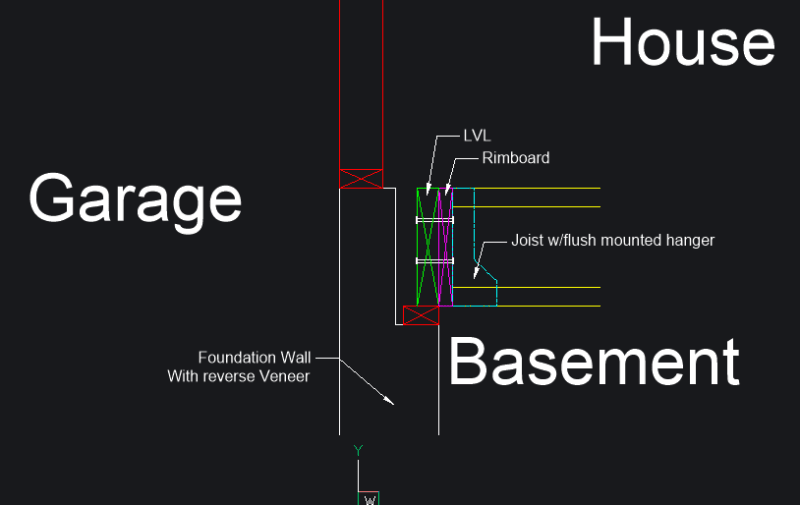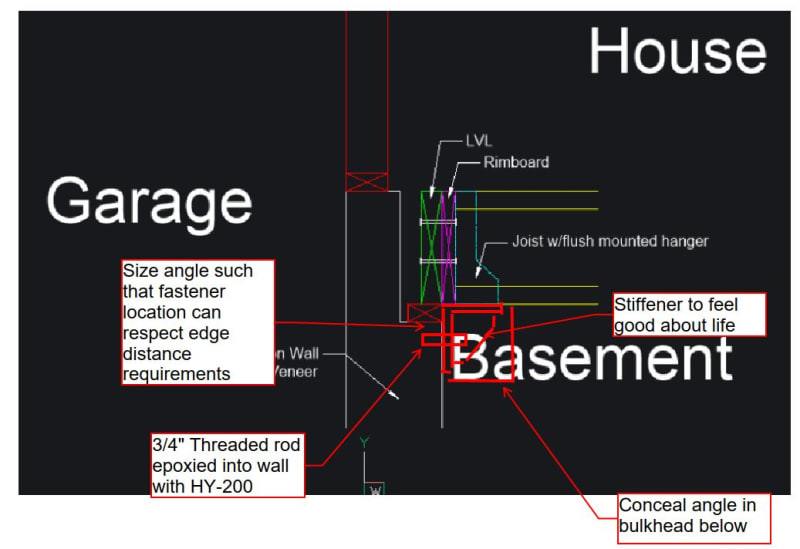lubos1984
Structural
- Jul 5, 2019
- 65
Good Morning Everyone,
Hope you all had a good weekend.
Have an issue on a jobsite where for whatever reason the floor manufacturer has produced joists that are too short. To reorder new joists would require an extensive amount of rework, so I was wondering if the below is an acceptable repair? Idea is to bolt a LVL to the rim board to provide the required bearing over the foundation, and attach the joists on hangers to the rim board.
This repair detail is for a typical residential house with I joists.
Any further suggestions ? Much appreciated.
Thanks!

Hope you all had a good weekend.
Have an issue on a jobsite where for whatever reason the floor manufacturer has produced joists that are too short. To reorder new joists would require an extensive amount of rework, so I was wondering if the below is an acceptable repair? Idea is to bolt a LVL to the rim board to provide the required bearing over the foundation, and attach the joists on hangers to the rim board.
This repair detail is for a typical residential house with I joists.
Any further suggestions ? Much appreciated.
Thanks!


